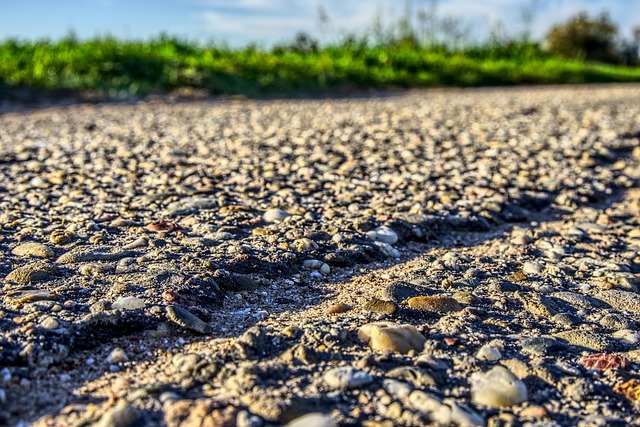When the sea rises, a town’s shoreline is not only a physical boundary; it is a living narrative of generations who have carved their lives into salt‑washed rocks, woven festivals around the ebb and flow of tides, and learned to read the weather as an ancient tongue. In the face of accelerating climate change, the erosion of these places threatens more than concrete and sand—it threatens the very essence of local identity that binds people to their history and each other.
The threat of extreme weather to cultural landscapes
Extreme weather events—hurricanes, flash floods, prolonged droughts, and unseasonal heatwaves—are reshaping the physical and social fabric of communities worldwide. These storms can demolish historic structures, wash away traditional irrigation channels, and disrupt seasonal festivals that have been integral to a region’s cultural calendar. The loss of these tangible and intangible assets can erode the sense of belonging that fuels local identity, leading to a profound cultural dislocation.
- Storm surges that breach levees can submerge historic waterfront markets.
- Droughts can render centuries‑old orchards barren, ending a lineage of culinary traditions.
- Heatwaves can accelerate the decay of wooden architecture, threatening vernacular styles.
Case study: coastal towns in the Pacific
Take the example of a small island community that has celebrated a coral‑reef festival for over a millennium. Recent bleaching events have stripped the reef of its vibrant colors, and rising sea levels now encroach on the festival grounds. Without intervention, the community faces a dilemma: adapt the celebration or abandon a rite that defines their collective identity. This microcosm illustrates how climate forces can pressure cultural continuity, forcing communities to rethink how they preserve local identity amid environmental stress.
The role of community memory in resilience
Resilience is not solely a physical construct; it is rooted in the stories, songs, and rituals that communities transmit across generations. By documenting oral histories and embedding them into emergency planning, towns can harness collective memory as a guiding compass. Such narratives provide context for why certain locations hold significance, thereby ensuring that adaptation measures respect both ecological needs and cultural values.
Oral histories and storytelling
Storytelling is a powerful tool for bridging past and future. When elders share anecdotes about how they once navigated typhoons or harvested seasonal floods, younger residents gain a nuanced understanding of risk that purely scientific data may overlook. These narratives also reinforce a sense of ownership, encouraging people to participate actively in preserving their surroundings, a critical factor for sustaining local identity during climate transitions.
Policy frameworks that protect local identity
Effective governance requires a dual focus: safeguarding ecological integrity while honoring cultural heritage. Policies that integrate climate adaptation with heritage conservation create synergies that benefit both ecosystems and communities. Below are key policy elements that have shown promise across diverse settings.
- Designation of cultural landscapes as protected areas, limiting destructive development.
- Community‑led planning processes that give local voices priority in decision‑making.
- Financial incentives for restoring traditional building techniques that enhance resilience.
- Legal recognition of intangible cultural assets—festivals, rituals, and folklore—within climate action plans.
Funding mechanisms for adaptation and heritage
Public funding alone is insufficient; innovative financing such as green bonds, cultural tourism levies, and micro‑grant schemes can mobilize resources tailored to local identity. These mechanisms encourage community participation, as beneficiaries often oversee the allocation and oversight of funds, thereby reinforcing ownership and accountability.
Education and intergenerational learning
Schools serve as incubators for both scientific literacy and cultural continuity. Integrating climate education with local history curricula helps students understand that environmental stewardship is a cultural responsibility. Intergenerational projects—where children collaborate with elders on mapping historic sites—foster mutual respect and ensure that local identity survives future climatic upheavals.
School programs that celebrate place
Field trips to heritage sites, workshops on traditional construction, and storytelling circles are effective pedagogical tools. By engaging students in the physical preservation of their surroundings, these programs instill a sense of pride and responsibility that translates into active participation in community resilience efforts.
Sustainable tourism and cultural heritage
When tourism is managed responsibly, it can provide the economic means to preserve local identity while raising awareness about climate vulnerabilities. The key is to align visitor experiences with community values, ensuring that cultural narratives are respected and that tourism revenues support adaptation projects that safeguard both the environment and cultural patrimony.
Responsible visitor behavior
Tourists should be encouraged to learn about local customs, support local artisans, and adhere to guidelines that protect fragile ecosystems. By promoting respectful engagement, communities can transform tourism from a potential threat into a catalyst for preserving local identity and fostering climate resilience.
Climate justice and local identity
Disproportionate impacts of climate change often fall on marginalized communities whose cultural identities are deeply intertwined with the land. Addressing climate justice involves ensuring that adaptation strategies do not inadvertently erode the very cultural ties they aim to protect. Inclusive governance, equitable resource distribution, and recognition of indigenous knowledge systems are essential for honoring local identity while pursuing climate mitigation.
Advocacy and representation
Local identity must be amplified in regional and national policy discussions. Grassroots organizations can leverage data on cultural significance to negotiate better support for adaptation projects. By embedding local narratives into broader climate agendas, communities secure a voice that can shape equitable outcomes.
Conclusion
Protecting local identity amid climate change is not a peripheral concern—it is central to the sustainability of communities worldwide. When physical landscapes, cultural narratives, and adaptive policies are interwoven, they create a resilient fabric capable of withstanding extreme weather while preserving the soul of a place. Through community engagement, inclusive governance, and innovative financing, we can ensure that the stories of a town, the rhythm of its festivals, and the memory of its people endure even as the climate shifts. The challenge lies not in preventing change, but in guiding it in a way that honors the heritage that defines us all.




